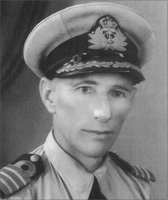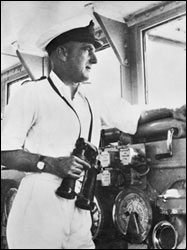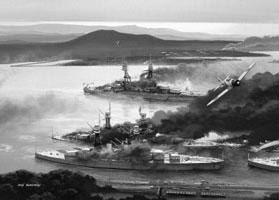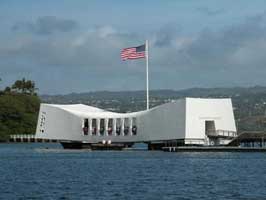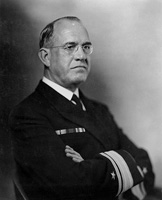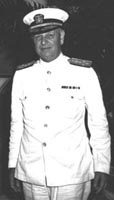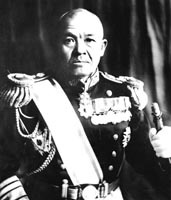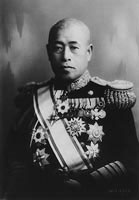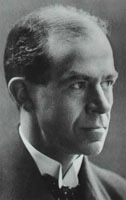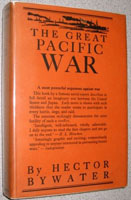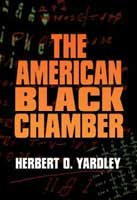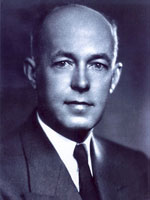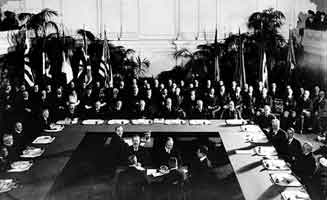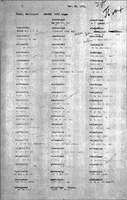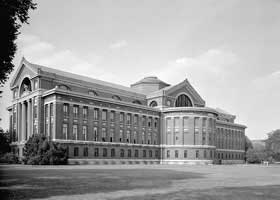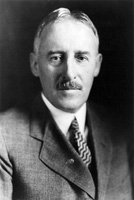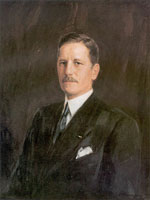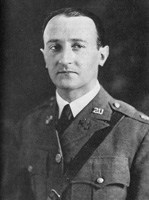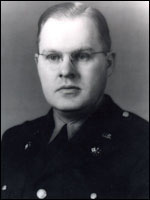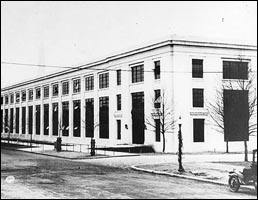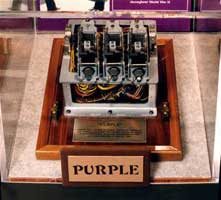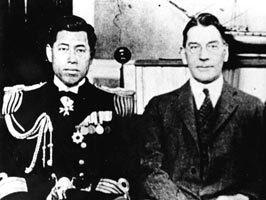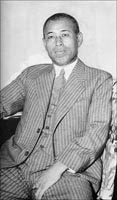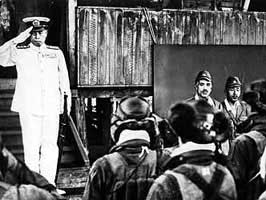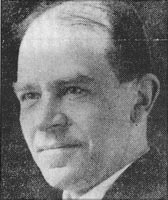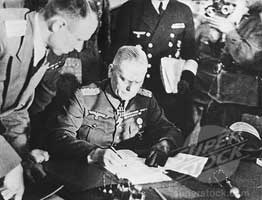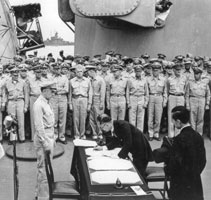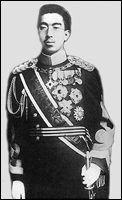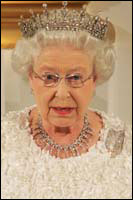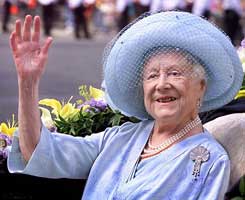|
The British Attack on Pearl Harbor!! |
| December
7th, 2014, is the 73nd anniversary of the British attack on Pearl Harbor!! |
The Hawaiian Islands were discovered by Captain Cook accidentally while he was desperately searching for the mouth of the Columbia River. He treated the natives contemptuously and he suffered the same fate as Magellan.
The British Empire–using the Japanese Navy as their mercenaries–launched a "surprise" attack on Pearl Harbor on December 7, 1941....The subsequent cover-up is the mother of all conspiracies!!
Since 1929, the British had a listening post in Singapore which monitored all radio communications in China and Japan. In 1937, the Japanese introduced a much more complicated encryption machine code named Magic. The brilliant cryptologist, Frank B. Lovett, actually constructed a duplicate of the Japanese machine without ever seeing the original. Churchill begged the U.S. for a copy, and 2 machines were delivered to London in June 1941.
In January 1941, the quartet traveled by train to Baltimore and boarded the 35,000-ton British battleship HMS King George V, which had just arrived with the new British ambassador, Lord Halifax. Their precious cargo of Purple machines was swung on board and locked away below, with the only keys being held by them. Since no one on board knew what the group of Americans was doing and they could not discuss their mission, Sinkov recalls they were treated with considerable reserve by the officers during the long voyage, which finally ended at Scapa Flow. (Rusbridger & Nave, Betrayal at Pearl Harbor, p. 109).
Commanding the Singapore spying station was a brilliant Australian linguist and cryptographer named Captain Eric Nave. Nave forwarded all the JN-25 naval codes on to Churchill for decryption by the Purple machines.
Churchill ordered HMAS Sydney sunk as target practice for the Japanese!!
As target practice for the upcoming attack on Pearl Harbor, Churchill ordered the Japanese to sink the Australian ship HMAS Sydney with a crew of 645.
|
|
|
|
In order to ensure that there would be no peace with the Japanese, and as target practice for the upcoming attack on Pearl Harbor, Churchill ordered HMAS Sydney sunk in November 1941.
|
|
|
|
Very soon after the sinking of HMAS Sydney, President's Roosevelt's attitude to the Japanese ambassador in Washington City changed completely:
Churchill may also have told Roosevelt that the Australians believed the Sydney had been sunk by a Japanese submarine. Although this would certainly have confirmed the treacherous nature of the Japanese, it would not have caused Roosevelt to react so strongly, as it had not involved an American warship. (Rusbridger & Nave, Betrayal at Pearl Harbor, p. 143).
Like the Manhattan Project, it is very doubtful if President Roosevelt had access to the top secret Purple intercepts. The British certainly knew every move that the Japanese Navy made from their spying base in Singapore.
The U.S. Pacific Fleet was stationed in San Diego in May 1940
Even though Churchill had 2 copies of the Purple encryption machines, no copies were sent to Admiral Kimmel at Pearl Harbor. This left the admiral blind and a perfect set-up for the "surprise attack."
|
From January 1940 to February 1941, admiral Richardson commanded the "United States" Pacific Fleet. The patriotic admiral deplored the forward deployment of the fleet from its headquarters in San Diego to Pearl Harbor.
|
Admiral Kimmel only received a slap on the wrist for allowing the "surprise" attack, as he was downgraded from a four-star admiral to a two-star or rear admiral.
Admirals Chūichi Nagumo and Isoroku Yamamoto commanded the Imperial Japanese Fleet during the "surprise" attack.
|
The entire Japanese plan of conquest was already laid out in a book written by a British Secret Service agent named Hector C. Bywater.
The Japanese blueprint for war was the work of Hector C. Bywater!!
In 1925, a top British Secret Service agent named Hector C. Bywater published an inflammatory novel about a war between Imperial Japan and the United States. It was called The Great Pacific War. The title was an oxymoron because pacific means peaceful.
Bywater was an expert on all the navies of the world. Before World War I he was a British spy in Germany, using a U.S. passport as cover. After the war, he worked as a "reporter" for the British owned New York Herald and the Baltimore Sun.
|
The proud Japanese were incensed by the fact that Bywater predicted their defeat in the end. Not one place in the 321-page book does Bywater mention the vital role that codebreaking would play in the coming war.
Bywater never mentioned that the Japanese cipher was broken in 1921
In modern warfare, signals intelligence plays a vital role. This is more so in the vast distances of the Pacific Ocean. If the Japanese had known that their naval code was broken, they never would have started their suicidal war.
Bywater predicted that the Japanese would lose in the end . . . and this prediction incensed the proud Japanese!
The Japanese believed that their ciphers were absolutely secure and that no nation could listen in on their communications. In this they were sadly mistaken....A brilliant cryptographer named Herbert O. Yardley, working for the Signal Corps, was as determined to solve their ciphers as Champollion was determined to solve the Rosetta Stone. He did it in the same way as Champollion by concentrating on the proper names found in the code.
|
Here is a short quote from Yardley's eye-opening book:
At last on November 28, 1921, the Black Chamber deciphered what I consider the most important and far reaching telegram that ever passed through its doors. A photograph of the code message itself and the Japanese decoded text are shown on facing page. It is from the Japanese Foreign Office to the Japanese Plenipotentiary in Washington. It is the first sign of weakness on the ten-to-seven Japanese demands. This telegram was definitely to determine the respective strength of the fleets of Japan and the United States. It shows that if America presses Japan vigorously, Japan will give up proposal 1, then proposal 2, and that provided the status quo of the Pacific defenses is maintained, she will even accept a ten-to-six naval ratio. (Yardley, The American Black Chamber, pp. 312-313).
The Washington Treaty for Naval Disarmament was held from December 1921 to February 1922.
During World War I, Yardley and his team worked for the Signal Corps in the Army War College.
|
When the U.S. Navy played war games during the 1920's, their main opponent was the Royal Navy . . . and not the Japanese. The next big disarmament conference was scheduled to take place in 1929 between Britain and the United States. Yardley and his team were determined once again to play a major role in the conference. At that time, Yardley was fired, and the Black Chamber was closed.
The Black Chamber was disbanded in 1929
Henry L. Stimson was appointed Secretary of State in January 1929. From 1930 to 1931, Stimson was the Chairman of the U.S. delegation to the London Naval Conference.
|
Under the Secretary of War, the Black Chamber was reborn as the Signal Intelligence Service, with full funding from the government:
At seventeen minutes past the hour of ten o'clock on the morning of April 24, 1930, the Signal Intelligence Service was born. It was at that moment that the chief signal officer officially received the order from the Secretary of War setting out the duties and responsibilities of the new organization. As first head of the SIS, Friedman found that his new responsibilities included the "preparation and revision of Army codes and ciphers and, in time of war, interception of enemy radio and wire traffic, the goniometric location of enemy radio stations, the solution of intercepted enemy code and cipher messages, and laboratory arrangements for the employment and detection of secret inks." (Bamford, The Puzzle Palace, p.29-30).
In disgust, and in desperate need of money during the Great Depression, Yardley wrote a tell-all book about the Black Chamber. It was a bestseller in many countries, and especially Japan, where it sold over 40,000 copies. Naturally, the Japanese were incensed that their telegrams to the conference were read, but they claimed that Yardley had gained access to their embassy, and read the deciphered telegrams!!
Following up on the success of his book, Yardley planned on writing another book entitled Japanese Diplomatic Secrets. The book was never published because Hurley passed a law making it a crime for government employees to divulge state secrets:
Whoever, by virtue of his employment by the United States, obtains from another or has or has had custody of or access to, any official diplomatic code or any matter prepared in any such code, or which purports to have been prepared in any such code, and without authorization or competent authority, willfully publishes or furnishes to another any such code or matter, or any matter which was obtained while in the process of transmission between any foreign government and its diplomatic mission in the United States, shall be fined under this title or imprisoned not more than ten years, or both. (United States Code, Title 18, Section 952).
The Bill was signed into law by President Roosevelt on June 10, 1933, and the law is still in effect. The Japanese were reassured that United States spying had ended with the death of the Black Chamber.
The Black Chamber was reborn as the Signal Intelligence Service in 1930
After World War I, the Black Chamber was really a clandestine organization, with little funding, but the new Signal Intelligence Service, headed by the War Department, had unlimited financing.
William F. Friedman was appointed to head up this new forerunner of NSA. Friedman had little talent as a cryptographer; his wife Elizabeth had all the brains, but he was discreet, and that was his main qualification for the position.
|
Headquarters for the reborn Black Chamber was in the Munitions Building next to the Navy Department.
|
|
In 1937, the Japanese introduced a new code based on the Polish and German Enigma machines. Friedman's outfit called it Purple, and it was modified and complicated by Japanese innovations. The machine had the capability of using millions of variables to encode information.
Without ever seeing a Japanese encryption machine, Rowlett constructed one from sheer guesswork, and it bore an uncanny resemblance to the Japanese original.
|
The team under Friedman worked on this new naval code and Frank B. Rowlett finally broke it in 1940. The proud Japanese did not even consider that their code was broken, and their British sponsors did nothing to enlighten them.
Bywater and Yamamoto were eliminated because they knew too much!!
Bywater and Yamamoto were eliminated because they might talk and reveal the identity of the puppetmasters behind the "surprise" attack on Pearl Harbor.
|
Here is a short quote from a Bywater biography:
If' Europe's leaders were in Bywater's thrall, the same could be said many times over for those in Japan where for so long British seagoing traditions had aroused admiration and envy. In particular, Bywater's proposal for naval arms limitation published in the Telegraph in 1933 struck a responsive chord in Japan. Eventually, the Imperial Navy adopted his proposal as its official position, and it was none other than Isoroku Yamamoto who turned up in London in October 1934 to present the idea to representatives of the Western powers gathered for the Preliminary Naval Limitation Conference. Listening to Yamamoto make the case, one might say that the script he recited had been virtually written by Hector Bywater. It is not possible to know whether Yamamoto was aware of the origin of the proposal he was urging, but if he was, it can only have raised his estimation of Bywater and in that way perhaps, heightened his respect for the British expert's ideas about what steps Japan might take if arms limitation failed.
Toward the end of the conference, at which Yamamoto's proposal was ultimately rejected by the Western powers, Bywater and Yamamoto met face to face and whiled away the better part of the evening discussing international relations in the Pacific. (Honan, Visions of Infamy, pp. 217-218).
It was feared that both nautical men had "loose lips."
|
Yamamoto's body was found with a small caliber bullet wound to the back of his head. He was cremated shortly after the ambush to hide the real cause of his death.
Only the Day of Judgment will reveal the exact reason for the timely death of these 2 men. Bywater might have tried to warn the Japanese that their codes were broken and thus prevented the suicidal attack on Pearl Harbor:
At the inquest the following day at the Richmond Police Court, the coroner accepted Dr. Geare's opinion and jotted down: "Sudden death. No suspicion of foul play." Then, in accordance with the wishes of the deceased, as made known by Ulysses Bywater, the remains were cremated at the Mortlake Crematorium, thus foreclosing the possibility of further scientific inquiry.(Honan, Visions of Infamy, p. 247).
The British Empire did not surrender in 1945
In May 1945, Nazi Germany surrendered . . . but they were only pawns or puppets of the British Empire.
|
Japan surrendered to the United States on September 2, 1945, but the Japanese followed the Bywater plan completely. Their navy was financed by the Bank of England, and a lot of their ships were built in Liverpool, England.
|
Japan never signed a peace treaty with Russia so the British Empire is still trying desperately to destroy both Russia . . . and the United States!!
In 1947, Uncle Sam became "Uncle Sap" when he entered into a top secret spying agreement with his deadly enemy–Churchill and the British Empire.
In 1948, the British Empire state of "Israel" was established in the Mideast.
The Cold War also began in earnest in 1948, with the subsequent wars in Korea, Vietnam, Serbia, Iraq, and the present aggression against the Republic of Syria.
The British lion is banned from Immanuel's Land!!
2,700 years ago, the Great Prophet Isaiah predicted the domain of the last day's Zion or Israel:
No lion shall be there, nor any ravenous beast shall go up thereon, it shall not be found there; but the redeemed shall walk there (Isaiah 35:9).
The only physical lions found in the United States of Israel are in zoos because they are not indigenous to the New World. The symbol of Immanuel's Land is the mighty eagle which soars to the heavens:
And he shall pass through Judah; he shall overflow and go over, he shall reach even to the neck; and the stretching out of his wings shall fill the breadth of thy land, O Immanuel. (Isaiah 8:8).
King Henry VIII would be horrified at the idea of a woman ruling over Britain. The king had no male heirs so that led to a miraculous chain of events that culminated in the blessed Reformation in England. Henry believed that a "weak woman" on the throne would encourage the French and Spanish to invade . . . and he was absolutely right!!
|
The Windsors justified the use of surrogates by quoting the Biblical stories of Abraham and Jacob, who produced children by their maidservants. By producing children by Marguerite Rodiere, the Windsors circumvented the prohibition against marrying a member of the Latin Church, and having genes "from the eldest daughter of the Church" would give them more zeal as "Defenders of the Faith."
It is a pity that the Windsors did not read these verses from the Book of Job:
Let me not, I pray you, accept any man's person, neither let me give flattering titles unto man. For I know not to give flattering titles; in so doing my Maker would soon take me away (Job 32:21-22).
Even the mighty Roman Emperors did not use flattering titles but simply called themselves PRINCEPS (First Citizen). Evolution works in reverse in the queer British Empire.
With the Day of Judgment fast approaching, it is time for the roaring lion (I Peter 5:8) to withdraw from the United States . . . and Canada . . . and take the Federal Reserve Bank, the Supreme Court, the CONfederacy, the Pentagon, and NSA with her!!
Vital links
References
Agawa, Hiroyuki. The Reluctant Admiral: Yamamoto And The Imperial Navy. Kodansha Intl., New York, 1979.
Alvarez, David. Secret Messages: Codebreaking And American Diplomacy. University Press of Kansas, Lawrence, KS, 2000.
Bamford, James. The Puzzle Palace: A Report on America's Most Secret Agency. Houghton Mifflin Co., Boston, 1982.
Bywater, Hector C. The Great Pacific War: A History of the American-Japanese Campaign of 1931–33. Houghton Mifflin Co., Boston, 1925.
Campbell, Colin. The Queen Mother: The Untold Story Of Elizabeth Bowes-Lyon, Who Became Queen Elizabeth The Queen Mother. St. Martin's Press. New York, 2012.
Honan, William H. Visions of Infamy: The Untold Story of How Journalist Hector C. Bywater Devised The Plans That Led to Pearl Harbor. St. Martin's Press, New York, 1991.
Kahn, David. The Reader of Gentlemen's Mail: Herbert O. Yardley and the Birth of American Codebreaking. Yale University Press, 2004.
Kahn, David.The Codebreakers: The Story of Secret Writing. Scribner, New York, 1996.
Persico, Joseph E. Roosevelt's Secret War. FDR And World War II Espionage. Random House, New York, 2001.
Pfennigwoerth, Ian. A Man of Intelligence; The Life of Captain Theodore Eric Nave. Rosenberg Publishing, NSW, 2006.
Russbridger, James, & Nave, Eric. Betrayal At Pearl Harbor: How Churchill Lured Roosevelt into World War II. Simon & Schuster, New York, 1991.
Montgomery, Michael. Who Sank the Sydney. Hoppocrene Books, New York, 1891.
Stinnett, Robert B. Day of Deceit: The Truth About FDR And Pearl Harbor. The Free Press, New York, 2000.
Yardley, Herbert O. The American Black Chamber. Naval Institute Press, Annapolis, Maryland.
Copyright © 2013 by Patrick Scrivener
